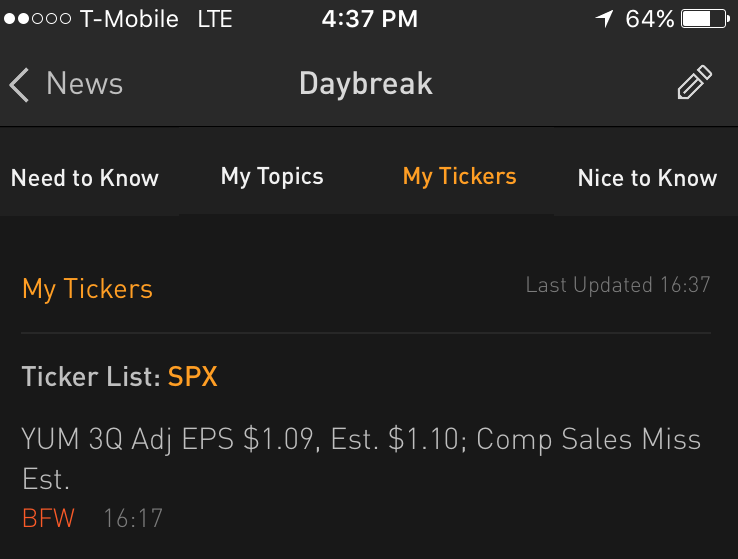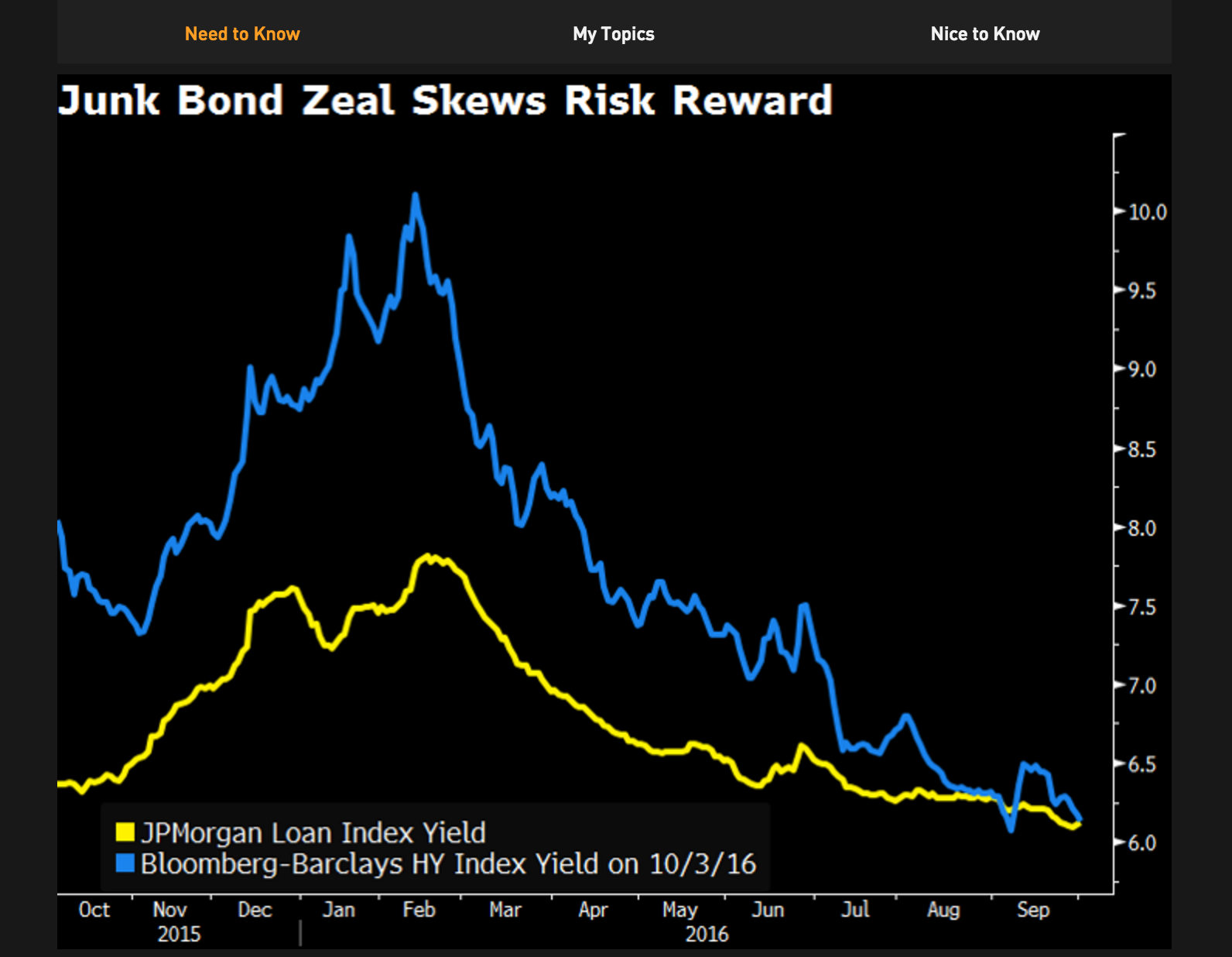A year and a half ago, Bloomberg Editor-in-Chief John Micklethwait got some editors together around an idea: Could Bloomberg be grabbing its readers earlier in the day?
Traditionally, the financial news powerhouse has connected with terminal subscribers when they arrived at work. There, they can each can call up Bloomberg’s proprietary blend of financial data and news from their desktop monitors.
But, since the same information is available on phones and other mobile devices, why not try to reach subscribers before they clock in?
That idea led to Bloomberg Daybreak, a new morning briefing available to Bloomberg’s terminal subscribers around the world. The product, which has been supervised by Daybreak Editors Matt Miller and Pete Newcomb, aims to prepare customers for their day in 10 minutes, regardless of what they’re interested in.
“Back in the day, you’d be reading a newspaper on the train, or as you’re getting ready to go to work,” Miller said. “What we’re trying to do is create something that is for our customers on their mobile devices.”
Here’s how it works: In the morning, Daybreak readers can receive a push notification or an email that calls their attention to the daily digest. Then, on the Bloomberg Anywhere app (the mobile version of Bloomberg’s Terminal) users are presented with a concise, multi-section briefing broken into several sections: “Need to Know,” “My Topics” and “Nice to Know.” There’s also a section called “My Tickers,” which serves up a list of bulletins tailored to each individual user.
The briefing is customizable based on each user’s portfolio, region and financial sector of interest. Subscribers based in Silicon Valley, for example, might prefer news centered on America, tech and the media. Commodities traders in the Middle East might want news about Asia and the latest information about copper trading.
The idea, Miller said, is to produce content “for all of Bloomberg’s different player types.”
“If you’re in the C-suite, if you’re an FX trader, if you deal in stocks, if you deal in bonds, if you’re dealing with investment banking,” Miller said. “Any different kind of player type, we’ve tried to make sure that Daybreak has a section or a feel for all of them.”

Image of Daybreak’s My Ticker section courtesy Bloomberg.
Three separate editions of Daybreak are produced for international readers by three teams around the world. A team in New York prepares the briefing for readers in Hong Kong. A team in Hong Kong prepares the briefing for London. And the London team produces the briefing for New York. This way, readers waking up in different time zones always have the latest information.
Altogether, Bloomberg has dozens of staffers around the world producing Daybreak for an audience of about 325,000 subscribers — each of whom pay more than $20,000 annually.

Image of Daybreak’s “Need to Know” section courtesy Bloomberg.
It’s fitting that Daybreak was released on the watch of Micklethwait, who came to Bloomberg in 2015 after serving as editor in chief of The Economist. There, he oversaw the launch of another in-app morning briefing, Economist Espresso, that sought to explain the daily global agenda to Economist subscribers in a concise package. As of April 2015, it had been downloaded 600,000 times.
There are no plans at the present to roll Daybreak out to Bloomberg’s general audience, Miller said. For non-terminal subscribers, there are other primers, including its “Five Things You Need To Know To Start Your Day.”
“We’ve got a universe of 325,000 people who pay an awful lot of money for exclusive material,” Newcomb said. “So the feeling is, we should probably cater to them first.”






